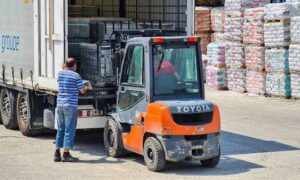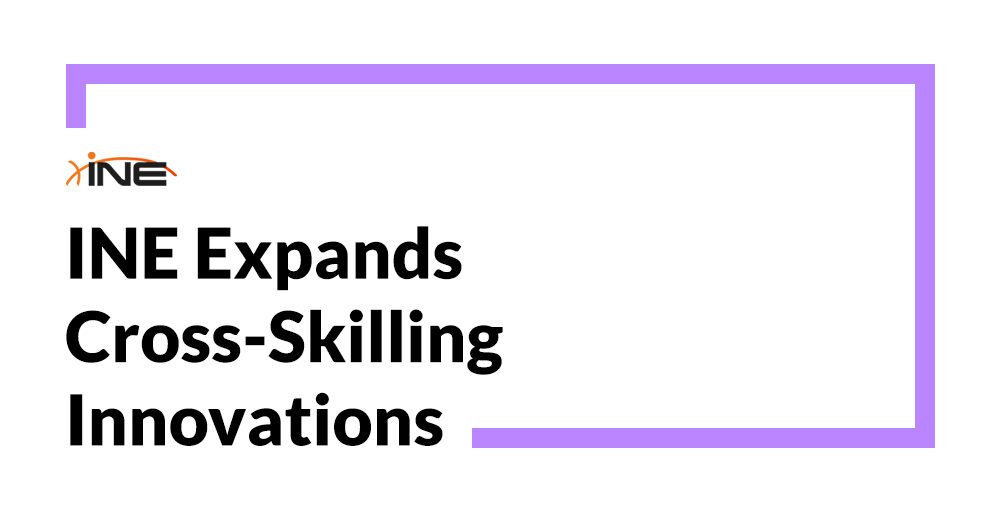Engineers coordinating fleets of autonomous robots at speeds of four metres per second have learned a brutal truth: complexity kills. In warehouse automation, where a single millisecond delay can cascade into thousands of pounds in lost productivity, the margin for bloated code or untested integrations is precisely zero. This same discipline—ruthless simplicity, exhaustive testing, elimination of unnecessary components—is now finding expression in an unlikely arena: competitive hackathons with severe line-count constraints.
The 100 Lines Hackathon 2025, organised by Hackathon Raptors, challenged developers to build production-grade terminal tools within strict limits: 100 lines for Bash, 300 for JavaScript, 500 for Rust. The event’s Terminal Toolbox theme attracted professionals from Google, Microsoft, Amazon, and NVIDIA, but its judging panel notably included Franky Joy, a Team Lead at Lane Automotive with over 18 years of experience integrating Exotec Skypod robots with conveyor systems, shipping operations, and automated packing lines. His presence on the panel was no accident—the constraint-driven philosophy the hackathon celebrates mirrors the engineering discipline required to keep warehouse robots operating at 99% uptime.

Real-time robotics demand what complexity cannot deliver
Modern warehouse automation operates on timescales that expose every architectural flaw. Exotec’s Skypod robots, deployed across more than 200 sites globally, travel at four metres per second whilst climbing racks up to 12 metres high. Each robot carries payloads of 30 kilograms, and a single workstation can process 600 bins per hour—one every six seconds. At facilities like Gap Inc.’s distribution centres, these systems handle up to 500,000 e-commerce units daily.
The coordination challenge is immense. Exotec’s Astar control system must track every robot in real-time, route them through three-dimensional space, and synchronise their movements with conveyor systems processing 2,500 totes per hour. The company’s engineers deliberately chose classical predictive algorithms over AI for route planning, reasoning that predictability matters more than optimisation: the same situation must always produce the same outcome.
| Metric | Performance |
|---|---|
| Robot speed | 4 m/s horizontal, 1.5 m/s vertical |
| Workstation throughput | 600 bins/hour (Next Gen) |
| SKU retrieval time | Under 2 minutes |
| System uptime | 99% globally |
| Productivity gain | 5x over manual picking |
This emphasis on predictability reflects hard-won lessons. At Ocado’s Erith facility in 2021, three robots collided on a grid where 3,000 units operate within five millimetres of each other, travelling at 13 feet per second. The result: 800 workers evacuated, thousands of orders cancelled, and a week-long disruption. The 2019 fire at Ocado’s Andover warehouse was even more catastrophic—an electrical fault in a battery charging unit caused a blaze that destroyed a £45 million facility over three days. A subsequent investigation identified a “communication breakdown between robot designers and structural engineers” as a root cause.
The seventy-six percent failure rate
Warehouse automation projects fail at rates that would terrify any investor. Gartner research indicates that 76% of logistics transformation projects—including robotics process automation—fail to meet their objectives. The reasons consistently trace back to complexity and integration failures rather than technology limitations.
ASOS’s Berlin warehouse disaster exemplifies the pattern. In 2019, integration failures between their Warehouse Management System and Warehouse Control System created an inbound backlog that paralysed operations. The automated storage and retrieval system couldn’t handle putaway at the required scale; returns had to be diverted to UK facilities; picking errors led to order cancellations. The financial impact: £20-25 million in three months, with transition costs ballooning from £35 million to £47 million. CEO Nick Beighton admitted the “magnitude of the impact was ahead of our expectations, both in terms of the scale of disruption and the complexity of the issues we faced.”
The largest recent failure involves Kroger’s partnership with Ocado. In November 2025, Kroger announced closure of three of their eight automated fulfilment centres and recorded a $2.6 billion impairment charge. The original vision of 20 robotic fulfilment centres, announced in 2018, collapsed when order volumes never materialised to justify the fixed costs. Brittain Ladd, a former Amazon executive, had warned years earlier that “if the CFCs were built without the needed volume, they would eventually be shut down.”
| Failure Case | Financial Impact | Root Cause |
|---|---|---|
| ASOS Berlin (2019) | £20-25M direct losses | WMS/WCS integration failure |
| Ocado Andover fire (2019) | ~$137M total losses | Engineer communication breakdown |
| Kroger-Ocado (2025) | $2.6B impairment | Volume projections failed |
| Industry-wide downtime | $50B annually | Complexity-related failures |
NASA’s sixty-line rule and the case for constraints
The engineers who keep warehouse robots collision-free operate under principles remarkably similar to those governing spacecraft software. NASA’s Jet Propulsion Laboratory established the “Power of 10” rules for safety-critical code, including a mandate that functions must not exceed 60 lines—roughly one printed page. The reasoning: each function should be “understandable and verifiable as a unit.”
Gerard Holzmann, the NASA engineer who developed these rules, observed that “simpler control flow translates into stronger capabilities for verification and often results in improved code clarity.” The rules prohibit recursion, require fixed upper bounds on all loops, and ban dynamic memory allocation after initialisation. These constraints exist because complexity compounds in ways that make verification impossible—and in systems where a bug can cost lives or billions of pounds, verification is everything.
Research supports this approach. Studies show cyclomatic complexity correlates strongly with defect rates; functions with complexity above 10 tend to contain the most bugs. Microsoft and IBM research found that Test-Driven Development—another constraint-based methodology—reduces pre-release defect density by 40-90% whilst adding only 15-35% to initial development time. The investment pays for itself rapidly: fixing a bug in maintenance can cost 100 times more than catching it during design.
When 300 lines must do everything
The 100 Lines Hackathon applies this same philosophy to competitive development. The winning project, Traverse by Team Kaizen, delivered peer-to-peer file sharing in Rust with SHA-based integrity verification, chunked transfer protocols, and a hybrid P2P/relay architecture—all with zero external dependencies. Judge Shrikant Thakare called it “sharp constraint-driven thinking and excellent Rust craftsmanship.”
Second place went to ApiCraft, a zero-dependency REST client that unifies API testing, mock serving, environment management, and code generation in exactly 300 lines of JavaScript. The tool includes request history tracking, variable interpolation across environments, and automatic code generation for fetch, axios, and curl—features that typically require thousands of lines and dozens of dependencies. Judge Santosh Praneeth Banda noted he was “blown away by the craft here.”
Third place was claimed by Secure Guard, a security scanning tool detecting 25+ secret patterns using entropy analysis and context-aware false-positive reduction. The project incorporates ThreadPoolExecutor parallelism for performance and is designed for immediate CI/CD pipeline integration.
Franky Joy’s perspective as a judge reflects his daily work at Lane Automotive, where integrating Exotec robots with enterprise systems demands the same discipline. His background includes implementing high-performance ElasticSearch and Lucene search systems, establishing Azure DevOps CI/CD automation, and advocating for TDD as foundational to clean, maintainable code. When robots must coordinate in milliseconds and a single integration failure can halt an entire warehouse, every unnecessary line of code becomes a liability.
Constraints as competitive advantage
The average CLI tool runs 2,400 lines with 137 dependencies. The 100 Lines Hackathon asked: what if we stripped everything away and kept only what matters? The answer, demonstrated by projects like Traverse and ApiCraft, is that minimal code can deliver maximum impact.
This isn’t merely an academic exercise. Major technology companies increasingly mandate line limits for modules and services, recognising that over-engineering costs the global software industry an estimated $84 billion annually. The same forces driving warehouse automation toward simpler, more predictable architectures are reshaping how elite developers approach their craft.
The engineers who keep Skypod robots travelling at four metres per second without collision have learned that constraints don’t limit creativity—they focus it. Every unnecessary component is a potential failure point; every untested integration is a latent crisis. The 100 Lines Hackathon celebrates developers who understand this truth, building production-ready tools that prove elegance emerges not from abundance, but from disciplined restraint.


































